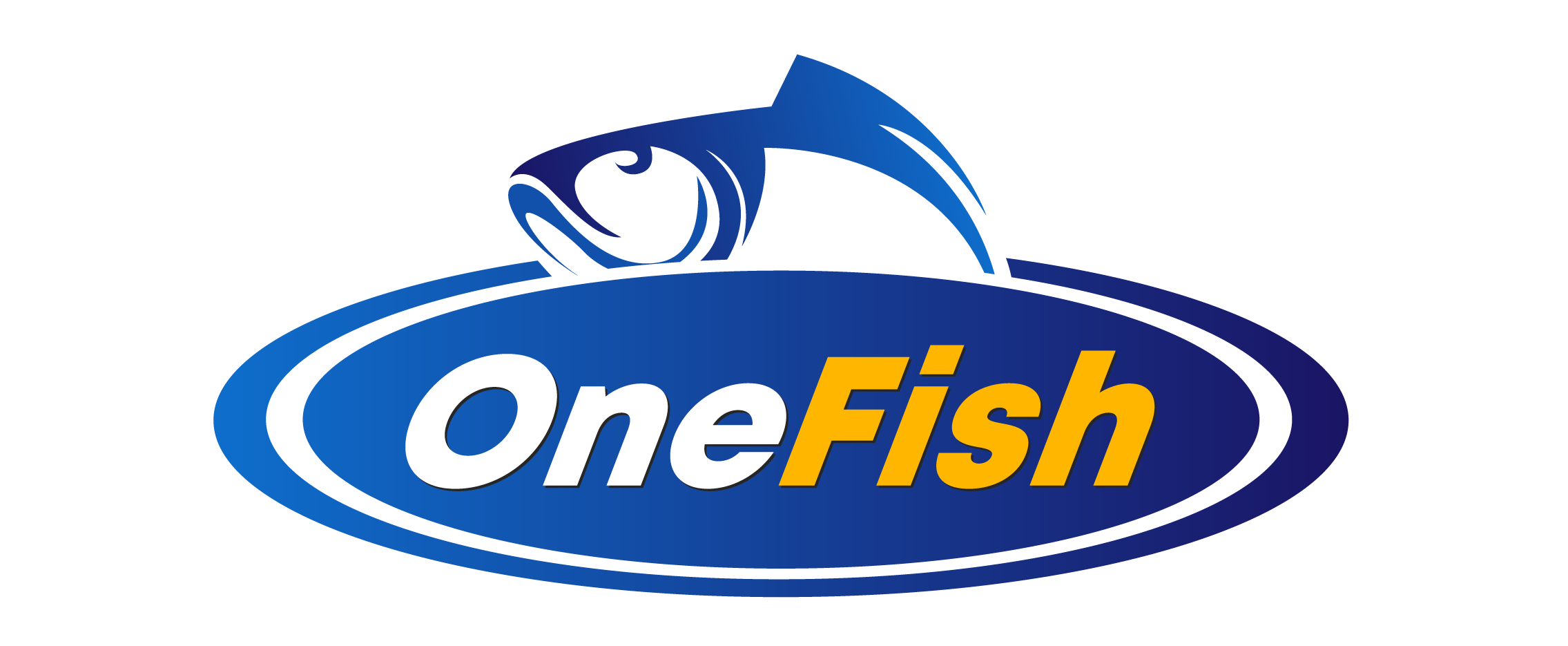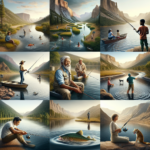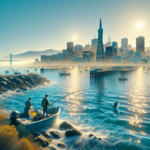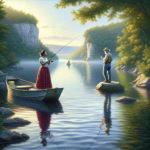Fishing in Lake Lanier: Georgia’s Most Popular Fishing Destination
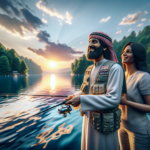
Introduction
Did you know that Lake Lanier, located in northern Georgia, attracts over 7.5 million visitors annually, making it one of the most popular recreational lakes in the United States? Among its many attractions, fishing stands out as a favorite activity for both locals and tourists. This article will delve into the various aspects of fishing in Lake Lanier, covering everything from the best fishing techniques and species information to top fishing spots and seasonal considerations.
Whether you’re a seasoned angler or a novice looking to cast your first line, understanding the nuances of fishing in Lake Lanier can significantly enhance your experience. This guide aims to provide comprehensive information to help you make the most of your fishing trips to this iconic lake.
Background/Context
Historical or Cultural Significance
Lake Lanier, officially known as Lake Sidney Lanier, was created in 1956 with the completion of the Buford Dam on the Chattahoochee River. Named after the famous Georgia poet Sidney Lanier, the lake was initially constructed for flood control, water supply, and hydroelectric power. Over the years, it has evolved into a major recreational hub, offering activities like boating, swimming, and, of course, fishing.
Geographical Overview
Spanning over 38,000 acres with 692 miles of shoreline, Lake Lanier is situated in the foothills of the Blue Ridge Mountains. The lake’s diverse ecosystem includes a variety of fish species, making it a prime location for anglers. The climate in this region is generally mild, with hot summers and cool winters, providing year-round fishing opportunities.
Key Points/Details
Fishing Techniques
Technique Overview
Lake Lanier offers a variety of fishing techniques suitable for different species and conditions. Some of the most popular techniques include:
- Spinning: Ideal for catching bass and crappie, spinning involves using a spinning reel and rod to cast lightweight lures.
- Fly Fishing: Although less common, fly fishing can be effective for targeting trout in the lake’s tributaries.
- Trolling: This technique involves dragging lures or bait behind a moving boat, making it effective for catching striped bass and walleye.
When and Where to Use
Each technique has its optimal conditions:
- Spinning: Best used in shallow waters and around structures like docks and submerged trees, especially during spring and fall.
- Fly Fishing: Most effective in the cooler months when trout are more active in the tributaries.
- Trolling: Ideal for deeper waters and during the summer months when fish tend to move to cooler, deeper areas.
Recommended Gear
- Spinning: Medium-light spinning rod, 6-8 lb test line, and a variety of soft plastic lures and crankbaits.
- Fly Fishing: 5-6 weight fly rod, floating line, and a selection of nymphs and streamers.
- Trolling: Medium-heavy trolling rod, 20-30 lb test line, and deep-diving crankbaits or live bait rigs.
Species Information
Species Overview
Lake Lanier is home to a diverse range of fish species, including:
- Largemouth Bass: Prefers shallow, vegetated areas and is most active during the spring and fall.
- Striped Bass: Often found in deeper waters and is known for its powerful fight.
- Crappie: Typically found around submerged structures and is most active during the spring spawning season.
- Walleye: Prefers cooler, deeper waters and is most active during the early morning and late evening.
Best Practices
To successfully catch these species, consider the following tips:
- Largemouth Bass: Use soft plastic lures and fish around structures like docks and submerged trees.
- Striped Bass: Trolling with deep-diving crankbaits or live bait is highly effective.
- Crappie: Use small jigs or live minnows around submerged structures.
- Walleye: Trolling with nightcrawlers or deep-diving crankbaits during low-light conditions.
Location Information
Top Fishing Spots
Some of the best fishing spots in Lake Lanier include:
- Bald Ridge Creek: Known for its excellent bass fishing, especially during the spring.
- Shoal Creek: A prime location for crappie fishing, particularly around submerged structures.
- Flat Creek: Offers good opportunities for catching striped bass and walleye.
- Little River: Ideal for fly fishing, especially for trout in the cooler months.
Regulations and Licenses
Before fishing in Lake Lanier, it’s essential to be aware of local regulations and licensing requirements:
- Fishing License: A valid Georgia fishing license is required for all anglers aged 16 and older.
- Catch Limits: Be sure to check the Georgia Department of Natural Resources website for current catch limits and size restrictions for different species.
- Seasonal Restrictions: Some areas may have seasonal closures or restrictions, so it’s important to stay informed.
Seasonal Considerations
Seasonal Variations
Fishing conditions in Lake Lanier can vary significantly throughout the year:
- Spring: A prime time for bass and crappie fishing as these species move into shallower waters to spawn.
- Summer: Fish tend to move to deeper, cooler waters, making trolling an effective technique.
- Fall: Another excellent season for bass fishing as fish become more active in preparation for winter.
- Winter: While fishing can be slower, targeting deeper waters can yield good results for species like walleye and striped bass.
Best Times to Fish
The optimal times for fishing in Lake Lanier are generally early morning and late evening when fish are most active. However, specific times can vary depending on the species and season.
Events and Tournaments
Event Overview
Lake Lanier hosts several fishing tournaments and events throughout the year, attracting anglers from all over the country. Some notable events include:
- Lake Lanier Bass Tournament: Held annually in the spring, this tournament is a major event for bass anglers.
- Crappie USA Tournament: A popular event for crappie fishing enthusiasts, usually held in the fall.
- Striper Challenge: An exciting tournament focused on catching striped bass, typically held in the summer.
Preparation Tips
To prepare for these events, consider the following tips:
- Gear: Ensure you have the appropriate gear for the targeted species and conditions.
- Practice: Spend time practicing your techniques and familiarizing yourself with the lake’s layout.
- Strategy: Develop a strategy based on the specific rules and conditions of the tournament.
Tips and Best Practices
General Tips
Here are some general tips to enhance your fishing experience at Lake Lanier:
- Stay Informed: Keep up-to-date with local fishing reports and conditions.
- Be Patient: Fishing can be unpredictable, so patience is key.
- Respect Nature: Follow all regulations and practice catch and release when appropriate.
Avoid Common Mistakes
Common mistakes to avoid include:
- Overfishing: Be mindful of catch limits and avoid overfishing any one area.
- Ignoring Weather Conditions: Always check the weather forecast and be prepared for sudden changes.
- Using the Wrong Gear: Ensure you have the appropriate gear for the species and conditions you’re targeting.
Advanced Techniques
For those looking to take their fishing to the next level, consider these advanced techniques:
- Electronics: Use fish finders and GPS to locate fish and navigate the lake more effectively.
- Advanced Lures: Experiment with advanced lures like swimbaits and jerkbaits to target larger fish.
- Seasonal Patterns: Study seasonal patterns and behaviors of fish to improve your success rate.
Gear and Equipment Recommendations
Essential Gear
The essential gear for fishing in Lake Lanier includes:
- Rod and Reel: A medium-light spinning rod and reel for general use.
- Line: 6-8 lb test line for most species.
- Lures: A variety of soft plastic lures, crankbaits, and jigs.
- Bait: Live bait like minnows and nightcrawlers.
Optional Gear/Upgrades
Consider these optional upgrades to enhance your fishing experience:
- Fish Finder: Helps locate fish and underwater structures.
- GPS: Useful for navigation and marking productive spots.
- Advanced Lures: Swimbaits, jerkbaits, and topwater lures for targeting larger fish.
Where to Buy or Rent
You can purchase or rent fishing gear from local shops like Hammonds Fishing Center or online retailers like Bass Pro Shops and Amazon.
Safety and Conservation
Safety Tips
Safety should always be a priority when fishing in Lake Lanier:
- Weather: Always check the weather forecast and be prepared for sudden changes.
- Life Jackets: Wear a life jacket when on a boat.
- Hydration: Stay hydrated, especially during the hot summer months.
Conservation Practices
Practicing sustainable fishing is crucial for preserving Lake Lanier’s ecosystem:
- Catch and Release: Release fish that are not within legal size limits or that you do not intend to keep.
- Respect Wildlife: Avoid disturbing local wildlife and habitats.
- Follow Regulations: Adhere to all local fishing regulations and guidelines.
Planning Your Trip
Accommodations
There are several accommodation options near Lake Lanier, including:
- Lanier Islands Resort: Offers a range of lodging options from hotel rooms to lakeside villas.
- Local Campgrounds: Various campgrounds around the lake provide a more rustic experience.
- Vacation Rentals: Numerous vacation rentals are available through platforms like Airbnb and VRBO.
Travel Tips
When planning your trip to Lake Lanier, consider the following travel tips:
- Routes: The lake is easily accessible via major highways like I-85 and I-985.
- Transportation: Renting a car is recommended for easy access to different fishing spots around the lake.
- Local Amenities: Nearby towns like Gainesville and Buford offer various amenities, including restaurants, shops, and gas stations.
Additional Activities
If you’re traveling with family or looking for other activities, consider these options:
- Boating: Rent a boat or take a guided tour of the lake.
- Hiking: Explore the numerous hiking trails around the lake.
- Water Sports: Enjoy activities like kayaking, paddleboarding, and jet skiing.
Frequently Asked Questions (FAQs)
Do I need a fishing license to fish in Lake Lanier?
Yes, a valid Georgia fishing license is required for all anglers aged 16 and older.
What are the best times of year to fish in Lake Lanier?
The best times are generally spring and fall for bass and crappie, while summer is ideal for trolling for striped bass and walleye.
Can I rent fishing gear near Lake Lanier?
Yes, several local shops offer gear rentals, including Hammonds Fishing Center.
Are there any fishing tournaments held at Lake Lanier?
Yes, Lake Lanier hosts several fishing tournaments throughout the year, including the Lake Lanier Bass Tournament and the Striper Challenge.
Conclusion
Fishing in Lake Lanier offers a unique and rewarding experience for anglers of all skill levels. From its diverse fish species and top fishing spots to its rich history and year-round opportunities, Lake Lanier truly stands out as Georgia’s most popular fishing destination. By following the tips and guidelines provided in this article, you’ll be well-prepared to make the most of your fishing adventures at this iconic lake. So grab your gear, head to Lake Lanier, and enjoy the thrill of fishing in one of the best spots in the country!
